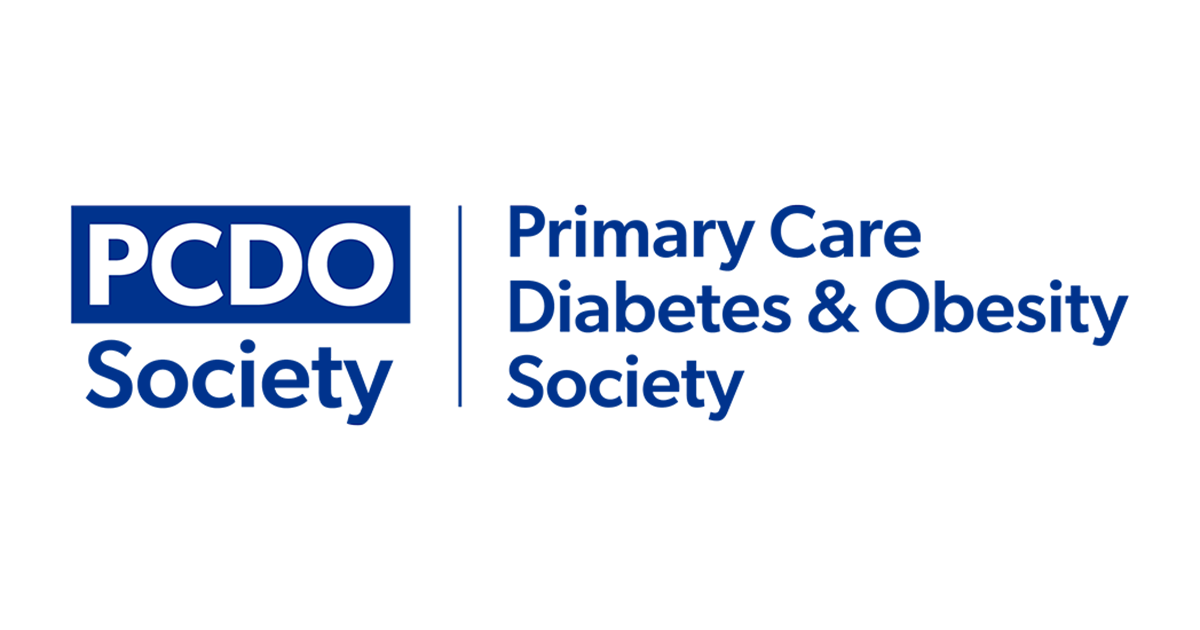Since lockdown began in March 2020, our efforts have largely been focussed on acute disease and adapting our primary and community services to cope with the COVID-19 pandemic and remote working. As deaths and infection rates fall, and the individual nations slowly emerge from lockdown, we can refocus our efforts on chronic disease management and caring for people with diabetes. We are presented with two urgent discussions and decisions – deciding how to deliver diabetes care in this new environment, where it is likely that remote reviews will be needed for some people in the longer term, and how to cope with the backlog of missed reviews by identifying who to prioritise and whether some reviews can be postponed or delayed.
Many teams are also identifying a once-in-a-career opportunity to critically evaluate how we delivered diabetes care in our service previously and whether, if we were starting a new service (which, in effect, many of us are doing), we would design it differently.
How to deliver remote consultations
Over the last few months, we have all had to adapt rapidly, expanding our delivery of remote consulting using email and video, as well as telephone consultations. For many of us, these have by necessity formed our only contact with most people with diabetes for the last four months, with many teams not undertaking any formal diabetes reviews during this time.
To assist Primary Care Diabetes Society (PCDS) members conduct remote diabetes reviews effectively, Jane Diggle and I have summarised our recent learning and experience of delivering remote diabetes reviews into the PCDS quick guide “How to undertake a remote diabetes review”, which is endorsed by Diabetes UK and published in this issue of the Journal (Diggle and Brown, 2020). The guide includes a one-page algorithm and shares ideas on how to prepare for remote diabetes reviews, including gathering data remotely; proposes core questions to use during the review; and provides ideas for follow-up, which may require more careful consideration following a remote review. Since its social media launch in June, it has already been shared, adopted and adapted widely, and we hope that you will continue to share your comments on how you are using it.
Diabetes management is very dependent on biochemical values, with a recent HbA1c and access to eGFR monitoring needed to plan glycaemic management for the majority of people and to initiate or intensify ACE inhibitors or ARBs for blood pressure. Hopefully, access to blood and urine testing is becoming available in most parts of the UK as services become re-established. Practices are likely to begin restricted, brief, face-to-face consultations using appropriate levels of personal protective equipment (PPE) to perform blood and urine testing, blood pressure measurement and foot examination, with follow-up continuing remotely. Teams who have previously used a two-visit model, such as Year of Care reviews, may choose to carry out the second discussion and treatment-planning visit remotely by telephone or video.
Roger Neighbour, speaking at a Royal College of General Practitioners lifestyle webinar recently, challenged the audience to think about whether increased use of remote consulting in the longer term is necessarily a good thing, to reflect on what we each miss from our previous face-to-face consultations, and how we can combine the best of both formats moving forward. He warned that just because a new way of consulting is trendy and feels efficient, it may not be desirable, effective or the best way to consult with everyone in the longer term. He warned that remote consultations can widen the health inequality gap, disadvantaging some older people and the IT illiterate, as many of us have already identified in our own practices. Finally, he reminded us that video consultations and any new way of working can be stressful, not just for the person consulting but also for us as healthcare professionals. His long-standing guidance on “housekeeping”, where we allow time between consultations to practise self-care, is particularly important right now.
As we make the transition back into delivering chronic disease management, now is a good time to make notes on what we aspire to deliver when restrictions lift and we have more time, and to develop a clear blueprint for our service. In exactly the same way as not all drugs will suit all people with diabetes, we should not assume that all remote consultation options will suit everyone, either. We have developed flexibility and can use that to ensure we match the best consultation type to each person we see – not everyone will share our passion for remote consultations or embracing technology. When we finally have more time, asking and understanding how frail, elderly Mrs Jones, who has lost friends to COVID-19 and has no family support, would like her diabetes review delivered will be important. Finding ways to arrange a brief visit from our team for phlebotomy, blood pressure measurement and foot check at home, a letter to share her results and outline possible treatment changes for her to consider followed by a remote telephone consultation with her usual diabetes nurse where she has the opportunity to discuss her concerns, her results and proposed treatment changes, and to agree management from the familiarity and safety of her home, may be her ideal. It will certainly feel safer than arranging transport to attend our clinic, sitting in a crowded waiting room worrying about delays, consulting with a difficult-to-identify person wearing a frightening array of PPE, which further enhances her perception that she is putting herself at risk and makes attendance for future reviews unlikely.
Who to prioritise
We all have a backlog of overdue diabetes reviews and, as we describe in “How to undertake a remote diabetes review” (Diggle and Brown, 2020), it is likely that we will choose to manage demand by prioritising those at highest risk and delay reviews of those who are stable and well-controlled. We propose using electronic searches to segment our population with diabetes into manageable cohorts who will benefit from early review, such as those with high cardiovascular disease (CVD) risk, those with risk factors associated with high morbidity or mortality with COVID-19, and previous non-attenders or where review is overdue. The Association of British Clinical Diabetologists (ABCD) have published A Quick Guidance to Risk Stratification and Recovery of Diabetes Services in the Post-COVID-19 Era on their website. It proposes prioritising adults with diabetes based on HbA1c, risk of hypoglycaemia, renal function, meeting treatment targets, and risk of foot and eye complications. The PCDS is collaborating with ABCD on their more detailed Roadmap to Recovery, as well as developing concise stratification resources specifically for primary care, which will be published here in the Journal.
As people with type 2 diabetes are most likely to die from CVD, “How to undertake a remote diabetes review” encourages prioritising review of those at very high risk, including those with previous CVD, those not meeting blood pressure, lipid and glycaemic targets, particularly those not taking statin therapy and those with chronic kidney disease. With the high likelihood of future COVID-19 spikes, we include in our priority review recommendations those with risk factors associated with high morbidity or mortality associated with the disease, allowing us to optimise glycaemic control and blood pressure, particularly in those in BAME groups and those with a BMI >40. People who have failed to engage previously are at high risk both for CVD and for serious outcomes with COVID-19, and now is a good time to make strenuous attempts to review these people.
In the Diabetes Distilled section of this issue of the Journal, a review of two articles from NHS England highlights the increased risks and serious consequences from COVID-19 in terms of morbidity and mortality in those with diabetes. Although we have risk scores for quantifying CVD risk, it remains difficult to quantify or stratify the increased risks with COVID-19 in different groups, including those with diabetes, and it is hoped that publication of a risk score that will help with this is imminent.
ABCD proposes splitting the high-risk group into those who are Urgent and need review within 3 months, and those in a Priority group for whom review should take place within 6 months. Within their Urgent group they include those with HbA1c >86 mmol/mol; uncontrolled blood pressure >160/100 mmHg; eGFR <30 mL/min/1.73 m2; severe hypoglycaemia within the last year or complete loss of hypoglycaemia awareness; recent admission for hyperglycaemia or CVD; active foot disease; or planning pregnancy in the next 6 months.
At the other end of the priority spectrum, the group where we may choose to defer review and arrange it routinely will include those who met their three National Diabetes Audit (or QOF, if in England) targets within the last year. In addition, ABCD specifies that this group could include those with an HbA1c <64 mmol/mol, with no risk factors for hypoglycaemia; eGFR >60 mL/min/1.73 m2;; no albuminuria; and with low-risk feet.
These people will need a telephone call or letter to reassure them that they have not been forgotten, that their diabetes is well controlled and no therapy changes are needed right now, and guidance on when review is likely. We can provide sick-day guidance, and information on when and how to seek advice if they become ill or have questions. It is important that people in this group remain engaged and that we do not lose track of the need to arrange review for them as soon as resources allow.
What’s new?
In this issue, in our At a Glance factsheets, Jane Diggle shares everything we need to know about ketone testing, while Asha Thomson and Reena Wadia explore the relationship between oral health and diabetes. Su Down shares her updated How to advise on sick day rules and Amro Maarouf discusses whether there is a role for HbA1c in screening children who may have type 2 diabetes. Breaking News from the 80th Scientific Sessions of the American Diabetes Association (ADA), which was held virtually in early June, is included in this issue. Look out for Nicola Milne’s ADA conference review in our next email and I’ll be sharing messages on sleep, remission and lifestyle medicine from the conference in a later email.
Finally, I am pleased to announce that all our regional and national PCDS conferences this year will take place in the virtual environment, ensuring that we can interact and learn from our home or practice, and allowing us to set our own timetable to watch sessions if we cannot attend live. Online registration is open, so, if you are not already signed up, check out the dates and details – we look forward to seeing you from September onwards. If you missed this year’s Virtual PCDS Smart Update in Diabetes series, the webinars are available to watch here.
So, as we all move into the post-lockdown era and begin undertaking reviews again, let’s not waste this opportunity to take a critical look at how we deliver diabetes care. Let’s make the time to embrace changes that we know will further improve the quality of our service, consider redesigning so we can work more efficiently or effectively, and ensure we celebrate and retain what works well. Jane and I hope you will join us on 14th July, when we will share and discuss tools and resources for remote diabetes reviews during our live webinar. Until then, stay safe.





How to minimise loss of muscle mass when using GLP-1-based therapies for weight loss.
26 Mar 2025